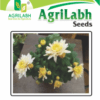US Numeric Size
Waist
US Denim Size
Hip
Chest

8 in stock
Flash Sale end in:

8 in stock
9 in stock
10 in stock
10 in stock
We want you to be happy with your purchase and we apologize if it is not. For whatever reason that you are not satisfied, we would be most happy to provide exchanges and returns for all items purchased from us if the following conditions are met.
All exchanges and returns would need to be raised within 10 days of the invoice date for Singaporeorders, and 20 days for overseas orders. For local deliveries, there is an option to exchange at any of our boutiques within Singaporeor through our online portal at www.company.com. All requests for returns however, would need to be strictly made online at www.company.com for both local and overseas deliveries.
All exchanges and returns would need to be raised within 10 days of the invoice date for Singaporeorders, and 20 days for overseas orders. For local deliveries, there is an option to exchange at any of our boutiques within Singaporeor through our online portal at www.company.com. All requests for returns however, would need to be strictly made online at www.company.com for both local and overseas deliveries.
1. Potting Mix: Use a potting mix suitable for seedlings or a mix of peat, perlite, and vermiculite. Hibiscus prefers well-draining soil, as waterlogged soil can lead to root rot.
2. Planting the Seeds: Plant each germinated seed in a separate pot at a depth of about ¼ to ½ inch. Bury the seeds with the root facing down and cover them lightly with the potting mix.
3. Light and Temperature: Place the pots in a sunny location where the hibiscus seedlings can receive at least 6-8 hours of sunlight daily. Hibiscus also thrives in warm temperatures, so aim for temperatures around 70°F to 80°F (20°C to 27°C) during the day and above 60°F (15°C) at night.
4. Watering: Keep the soil consistently moist but not waterlogged. Water the seedlings whenever the top inch of the soil feels dry. Avoid overwatering, as it can lead to root rot.
5. Transplanting: As the hibiscus seedlings grow and develop multiple sets of leaves, they will outgrow their small pots. Once they are about 6-8 inches tall and have a well-established root system, transplant them into larger containers or directly into the garden if the weather is warm and frost is no longer a concern.
6. Outdoor Planting (if applicable): If you plan to grow the hibiscus mix outdoors, choose a sunny spot in your garden with well-draining soil. Space the hibiscus plants according to their mature size, as they can grow quite large, depending on the variety. Follow the spacing recommendations provided on the seed packet.
7. Fertilization: Hibiscus plants benefit from regular fertilization during the growing season. Use a balanced fertilizer with a higher phosphorus content (the middle number in the NPK ratio) to encourage flower production. Follow the instructions on the fertilizer package for application rates and frequency.
8. Pruning: Prune the hibiscus plants as needed to shape them and encourage bushier growth. Regular pruning can also help to remove dead or weak branches and promote the growth of new flower buds.
With proper care and attention, your “Shevanti mix” hibiscus plants should grow into beautiful, colorful, and vibrant additions to your garden or indoor space.

You can ask anything you want to know about our products
onlinestore@shetiudyog.com
Reviews
There are no reviews yet